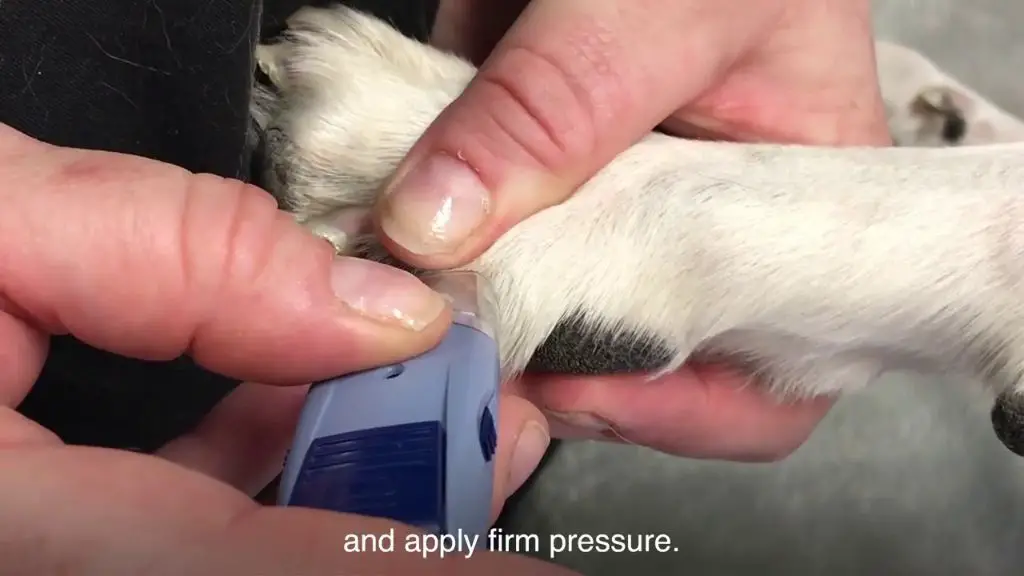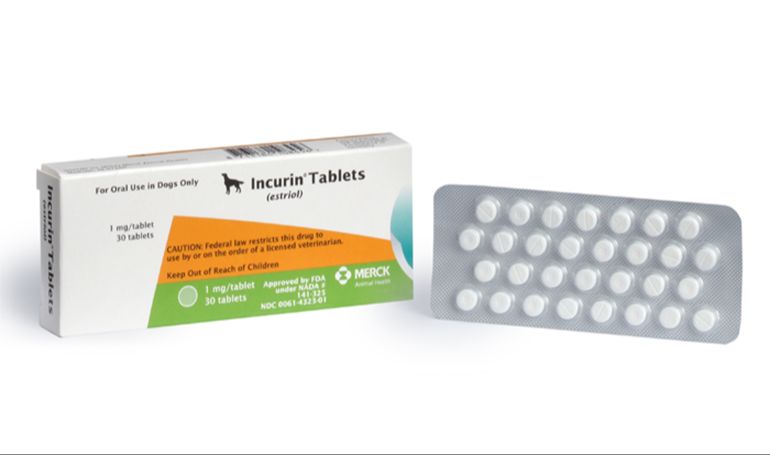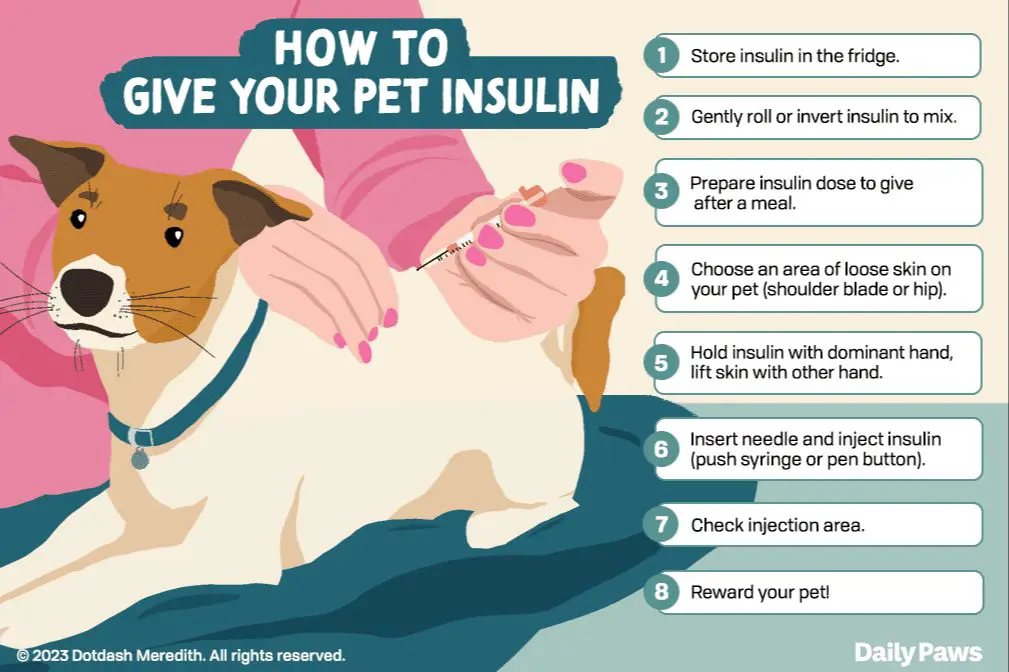Understanding Dog Diabetes
Diabetes is a chronic disease that affects how a dog’s body regulates blood sugar, or glucose. In dogs, diabetes is usually caused by insufficient production of insulin by the pancreas or improper response to insulin in the body. Insulin is the hormone responsible for allowing glucose to enter cells to be used for energy. With diabetes, glucose cannot get into the cells efficiently and thus builds up in the bloodstream while the cells are deprived of energy.
There are two main types of diabetes in dogs:
Type 1 diabetes is caused by destruction of insulin producing cells in the pancreas. This stops insulin production almost completely. Dogs with type 1 diabetes require insulin injections to stabilize blood sugar. This type of diabetes usually occurs in younger dogs.

Type 2 diabetes results from the body’s ineffective use of insulin. The pancreas still produces insulin, but the body cannot utilize it properly. This is the most common type of diabetes in dogs. Obesity is a major risk factor.
Certain dog breeds like Samoyeds, Miniature Pinschers, and Schnauzers are genetically predisposed to diabetes. Other risk factors include obesity, chronic inflammation, and certain medications. Female dogs that are not spayed and dogs between 5-12 years old have an increased risk as well.
Diagnosing Diabetes
If your dog is showing signs of increased thirst, increased urination, weight loss, or lethargy, diabetes may be the cause. The first step in diagnosing diabetes is a trip to the veterinarian. The vet will ask about your dog’s symptoms and medical history. They will also do blood and urine tests to check your dog’s blood sugar levels.
There are two main blood tests used to diagnose diabetes in dogs:
- A fasting blood glucose test. Your dog cannot eat for 8-12 hours before this test. A fasting blood sugar level of over 250 mg/dl indicates diabetes.
- A glucose tolerance test. Your dog gets an injection of glucose solution. Blood samples are taken periodically to measure how well the body regulates blood sugar. Failure to regulate blood sugar points to diabetes.
Urine tests check for glucose in the urine, which is another sign of diabetes. If test results lead to a diabetes diagnosis, the vet can determine the severity and discuss treatment options with you.
Dietary Changes
One of the most important ways to manage diabetes in dogs without insulin is through dietary changes. Since diabetes causes blood sugar levels to become too high, the goal is to feed a diet that helps regulate blood glucose. This involves feeding a low-carb, high-protein diet.
Carbohydrates raise blood sugar, so limiting carbs is crucial. Look for a dog food that contains under 30% calories from carbs. High protein diets, with around 40-50% calories from protein, can help control blood sugar spikes after meals. Lean protein sources like chicken, turkey, fish, eggs, and low-fat dairy are best.
It’s also important to transition to scheduled meal times rather than free-feeding. Feeding the same amount at the same times each day allows you to maintain steady blood sugar levels. Portion control is also key – consult your vet on the ideal caloric intake for your diabetic dog.
Avoid high glycemic foods that cause blood sugar spikes, like potatoes, corn, white rice, and processed grains. Swap out treats for healthy options like carrot sticks, green beans, or blueberries. Limit unhealthy fat sources too. With the right diet changes, many diabetic dogs can avoid insulin injections.
Oral Medications
One way to potentially manage diabetes in dogs without insulin is through oral medications prescribed by a veterinarian. Certain drugs can help stimulate insulin production from the pancreas or make the body more sensitive to insulin. Some common oral medications used for diabetic dogs include:
- Sulfonylureas like glipizide, which stimulate insulin secretion
- Biguanides such as metformin, which reduce insulin resistance and gluconeogenesis
- Meglitinides like repaglinide, which boost insulin production after meals
- Thiazolidinediones like pioglitazone, which improve insulin sensitivity
- Alpha-glucosidase inhibitors like acarbose, which delay carbohydrate digestion and absorption
These types of drugs may help lower blood glucose levels in some diabetic dogs to the point where insulin injections are no longer needed. However, oral medications don’t work for every dog and must be prescribed and monitored carefully by a veterinarian to avoid side effects. Frequent blood glucose checks are necessary to assess if the drugs are effectively managing the diabetes.
Supplements
Certain supplements may help manage diabetes in dogs without insulin. Two of the most commonly recommended are chromium and vitamin E.

Chromium is a mineral that enhances the effects of insulin. Studies show that chromium supplementation can improve blood sugar control in diabetic dogs. The recommended dosage is 200 mcg per day. Speak to your veterinarian before starting chromium.
Vitamin E is an antioxidant that may help prevent some of the complications of diabetes in dogs, such as nerve damage and vision problems. It also supports the immune system. The typical dosage for vitamin E is about 400 IU per day. Make sure to use natural vitamin E, rather than synthetic.
While supplements can provide benefits, they should not be used as a substitute for conventional treatment recommended by your vet. Always consult your vet before giving your dog any new supplements, especially with pre-existing conditions like diabetes.
Exercise
Exercise is extremely important for diabetic dogs as it can help improve insulin sensitivity and blood glucose control. Going on regular walks and engaging in playtime are great ways to get your dog moving. Low-impact activities like swimming are also excellent options, as they provide aerobic exercise without putting too much stress on your dog’s joints.
Aim for 10-20 minutes of activity 2-3 times per day, adjusting based on your dog’s energy levels. Make sure not to overexert your dog, especially if their blood glucose is not well controlled. Monitor your dog closely during and after exercise for signs of hypoglycemia like lethargy, muscle weakness, and disorientation. Having a sugary snack on hand is a good idea in case your dog’s blood sugar drops too low.
Consistency with exercise is key. Try to develop a regular routine and stick to it as much as possible. Depending on your dog’s unique needs, your vet may provide specific exercise recommendations. Overall, incorporating fun physical activities into your diabetic dog’s daily schedule can go a long way in managing their condition.
Weight Management
Maintaining a healthy weight is a crucial part of caring for a diabetic dog without insulin. Obesity and being overweight put additional strain on the body’s ability to regulate blood sugar levels. Getting your dog to a normal weight range, with visible waistline and palpable ribs, can greatly help manage diabetes symptoms and progression.
If your dog is overweight, work closely with your veterinarian to create a safe weight loss plan. Aim for controlled, gradual weight loss of 3-5% of your dog’s body weight over 2-3 months. Drastic calorie restriction can be dangerous. Feed your dog a reduced-calorie dog food and limit treats. Increase exercise with leash walks and play time. Weigh your dog weekly to monitor progress. Losing weight can allow the pancreas to function better and require less medication and insulin for blood sugar control.
Regular Vet Monitoring
Even if your diabetic dog is successfully managing the condition without insulin, ongoing vet care is crucial. Your vet will want to see your dog regularly to monitor their condition and make any needed adjustments to their treatment plan.
Most vets will recommend bringing your diabetic dog in for appointments every 3-6 months. At these checkups, the vet will do a physical exam, draw blood for labs, and discuss any changes in your dog’s health, diet, or activity levels. Maintaining tight control over blood sugar is important to prevent complications, so monitoring levels through periodic bloodwork allows your vet to catch any fluctuations early.
More frequent vet visits every 4-8 weeks may be recommended when your dog is first diagnosed and their treatment plan is still being optimized. Senior dogs or those with other health conditions may also need to be seen more regularly as it can be harder to regulate their blood sugar. Good communication with your vet and calling if you notice any problems are key.
While managing diabetes without insulin can reduce treatment costs and workload at home, ongoing vet care is still a necessity. Partnering closely with your vet provides the monitoring and fine-tuning needed for your dog’s diet, medication, and supplement regimen to be successful.
Home Care Tips

Caring for a diabetic dog at home can help manage the condition and prevent complications. Here are some tips:
Checking Blood Sugar at Home
Use a glucometer designed for dogs to check your dog’s blood sugar levels. Test first thing in the morning and before meals. Keep a log to identify trends and report to your vet. Checking blood sugar at home helps ensure it stays within the recommended range.
Preventing Complications
Well-controlled blood sugar helps avoid secondary health issues. To prevent problems:
- Administer oral medication and insulin properly.
- Feed the prescribed diabetic dog food and avoid treats.
- Check for urinary tract infections with annual vet exams.
- Brush teeth frequently to maintain dental health.
- Inspect paws and skin for any injuries to prevent infections.
- Limit stress and maintain a consistent routine.
Staying alert to your dog’s health and communicating with your vet ensures complications are avoided.
When Insulin is Needed
For some diabetic dogs, diet and lifestyle changes may not be enough to regulate blood sugar levels. Signs that insulin injections are likely required include:
- Persistently high blood glucose levels on routine testing
- Increasing frequency of symptoms like excessive thirst and urination
- Slow wound healing
- Weight loss despite increased appetite
- Lethargy, vomiting or other signs of ketoacidosis
If your veterinarian determines insulin is needed, they will prescribe a specific type and dosage based on your dog’s weight and response. Most dogs require insulin injections twice per day, approximately every 12 hours. Here are some tips for administering insulin injections:
- Injections are given subcutaneously, meaning just under the skin. Good areas include the neck, shoulders or hindquarters.
- Gently pinch up a fold of loose skin and insert the needle at a 45 degree angle.
- Give the prescribed dosage of insulin and hold for 5-10 seconds before withdrawing the needle.
- Rotate injection sites to avoid lipodystrophy, or hardened fatty tissue deposits.
- Use a new needle for each injection to keep it sharp.
- Store insulin refrigerated but take it out 30 minutes before injecting to minimize discomfort.
- Closely observe your dog after injections for hypoglycemia symptoms like lethargy or muscle tremors and contact your vet if these occur.

With proper administration, insulin injections can greatly improve quality of life for diabetic dogs. Work closely with your veterinarian to find the optimal insulin regimen for your pet’s needs.